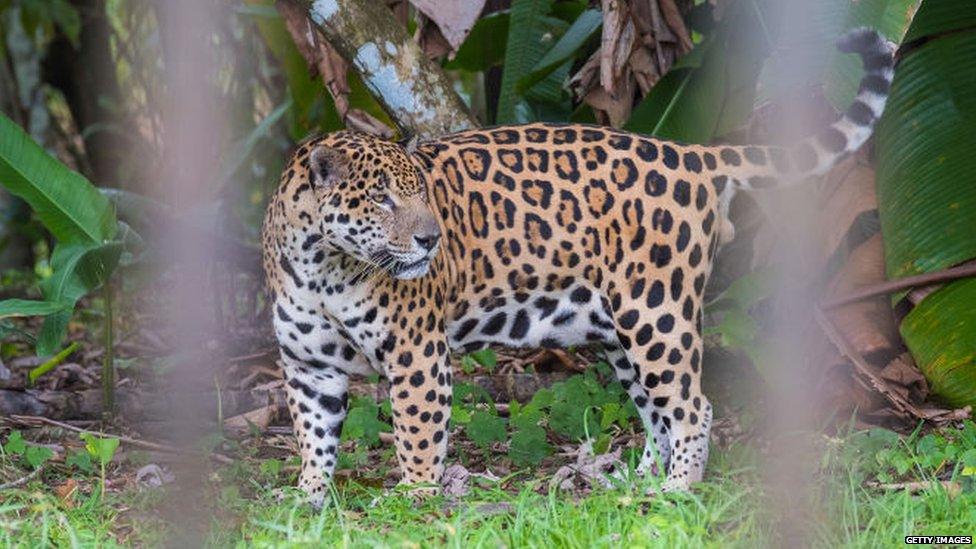Conservation: New protections for jaguar and Asian elephant
- Published

A jaguar pictured at a zoo in Guyana
New measures to protect the jaguar have been agreed at a wildlife summit held in India.
Six countries put forward plans to strengthen protection for the spotted big cat as it roams across the borders of different countries.
The species has lost about 40% of its habitat over the last 100 years.
While laws exist to protect jaguars in virtually all the countries where it lives, threats persist, including deforestation and poaching.
The is an international agreement that aims to conserve migratory species.
Including the jaguar in the agreement will help countries preserve crucial habitat. The aim is to enable animals to move along corridors between countries, helping to avoid the isolation that can lead to extinction.
Rebecca Regnery, deputy director of wildlife at the animal protection group Humane Society International, said listing the big cat will create an international legal framework.
"This will provide increased incentives and funding opportunities for this work, and that is critical for curbing habitat destruction, maintaining key migration corridors and addressing killings for retaliation and trafficking," she said.
The jaguar's present range extends from the southern edge of the US and Mexico in North America, across much of Central America, and south to Paraguay and northern Argentina in South America.
A female elephant stands on a railway track in Alipurduar, West Bengal, India
Other proposals passed on Thursday at the 13th Conference of the Parties include strengthened protection for the Asian elephant. The mammal is endangered due to loss of habitat, poaching, poisoning and obstacles to migration such as railways.
India, which is home to 60% of Asian elephants, shares some of these elephants with neighbouring countries, such as Bangladesh, Bhutan, Myanmar and Nepal. For populations outside India, many elephants cross international boundaries where they face a range of threats.
Mark Simmonds, also of Humane Society International, said migratory species need the nations that make up their ranges to work together to afford them protection.
"The highly migratory Asian elephant for example, is endangered throughout much of its substantial range, trying to survive in continually shrinking, degraded and fragmented habitat," he said.
"Its protection would be vastly improved if range countries work together to tackle these challenges as well as the conflict they often face with people as they migrate over long distances in search of food and shelter."
Representatives from more than 130 nations also agreed increased conservation status for:
The oceanic whitetip shark, which is now one of the most endangered species of shark
The great Indian bustard found on the Indian subcontinent
The Antipodean albatross.
The is taking place in Gandhinagar, Gujarat, from 15 to 22 February.
On Tuesday, wildlife groups called for nut-cracking chimp culture to be conserved. The proposal called for Guinea, Sierra Leone, Liberia and C么te d'Ivoire to work together to protect the nut-cracking chimpanzee of Western Africa, which gets its name from using tools to open the shells of nuts.
Follow Helen .